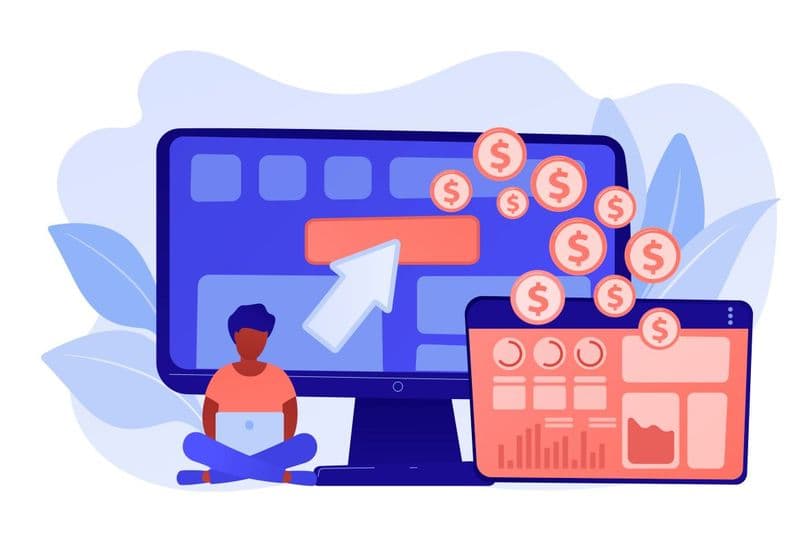Introduction
The sales process is multi-faceted, and a team is required to achieve its goal. A sales team has different positions, such as a Sales Development Representative (SDR), Account Executive (AE), Business Development Representative (BDR), Sales Engineer, Manager, etc. However, the employees at the lower level of the pyramid, such as SDRs and AEs, play the most important roles and engage directly with customers. A salesperson might also play multiple roles in a team. In this article, we will understand the key differences between these sales roles and how they work in coordination to achieve sales targets to ensure business development. Let us begin by defining the roles and then move on to the core topic of SDR vs. AE.

Quick read: SDR 101: Introduction to the World of Sales Development Representatives
A Quick Look at the Sales Development Representative and Account Executive Roles
SDR – The Prospector
SDR stands for Sales Development Representative. An SDR takes cares care of generating and qualifying leads in the sales process; that is, his role is prospecting and inbound or outbound lead generation. Sales reps are usually identified as people assigned a specific target or a quota, and their role is to get through those numbers. In contrast, the SDR role involves moving leads through the sales pipeline and ensuring conversion. This process is quite tedious, more than merely making a sale. Everything boils down to closing deals regardless.
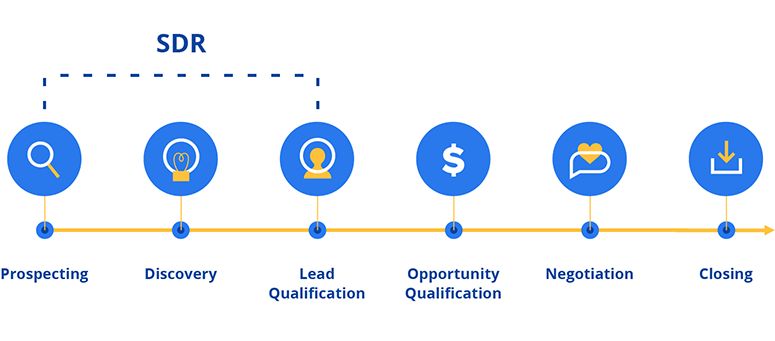
Responsibilities of an SDR
- Sales development representatives use various tools and techniques to track down potential clients. These are leads interested in buying the company's product or service.
- Based on the lead's buying enthusiasm, an SDR can categorize them into hot, warm, or cold leads. Using this, SDRs adopt various strategies to convert them into actual buyers. Strategies include cold calls, emails, and direct messages through various social platforms.
- A product can provide maximum satisfaction only in the hands of the ideal user. Therefore, an SDR must also find if a lead is a perfect fit. This process is known as qualifying leads. If you persist in sticking to the wrong lead, you are simply barking up the wrong tree.
- The difference between a cold lead and an unqualified lead is a fine line; an SDR must know to differentiate them distinctly. While unqualified leads must be left alone, continue to pay attention to the cold leads. Nurture your relationship with them until they understand the significance of your product and show readiness to buy.
- A record for the same is maintained through CRM tools to keep track of their interactions with the leads and their outcomes. This step helps personalize the approach and enhances qualifying better-quality leads and improving numbers.
- Finally, SDR links up these leads with an Account Executive to help further the course of action in sales. An SDR's journey in the sales pipeline is cut short here. From here, an AE takes the show forward.
AE - The Closer
AE stands for Account Executive. The role of an Account Executive is to revisit and ensure the worthiness of the leads qualified and nurtured by an SDR, usher them carefully through the sales pipeline, carry out negotiations if need be, and close business deals. While an SDR predominantly gives only a glimpse of the specifications, an AE is expected to make detailed presentations of the products and services. His job is also to ensure that the service can be customized per the needs of these potential leads. Let us see the responsibilities of an Account Executive in detail.
Steps to climb the ladder - SDR to AE! Watch this video to know more
Responsibilities of an AE
- An account executive is a level above the SDR. So his responsibilities too span wider. He oversees the activities of SDRs and ensures they are taking the right track in dealing with the leads. Once lead prospecting is done, an SDR sets up a meeting/call with these potential clients.
- AE is the host of the meetings that SDRs arrange. He addresses the clients, discussing mutual benefits, product features, and how far the services can be customized to cater to the needs of a wide range of preferences. They might also deliver sales demos and handle client objections.
- An SDR has put his efforts into pushing the leads forward in the pipeline, and an AE should not let it go futile. He must cleverly channel his efforts to turn these prospects into buyers. Therefore, his prime job is to close deals.
- AEs collaborate with other departments, such as marketing, planning, and consumer welfare. These departments, when intertwined, help in improving the closed won rate.
- It is the job of an Account Executive to set realistic sales goals. To make this possible, he must have a flair for understanding market movements and be able to forecast the future.
- Account Executives, in their capacity, must aim to satisfy the needs of the clients and ensure healthy relationships.
- In closing deals, a shrewd AE identifies other upselling and cross-selling opportunities, widening the client base further.
5 key differences between SDRs and AE
Focus on the Sales Funnel:
The prime difference between an SDR and AE lies in their focus on the sales funnel. While the role of an SDR is to fill the pipeline with potential leads, an AE takes care of moving these leads through the pipeline and closing the deals. Take a look at the sales funnel here; the ToFu part (top of the funnel) gains SDR's focus, whilst the remaining portion, MoFu and BoFu (middle and bottom of funnel), gets the attention of an AE. That is why SDRs are seen as the frontline of the sales force.
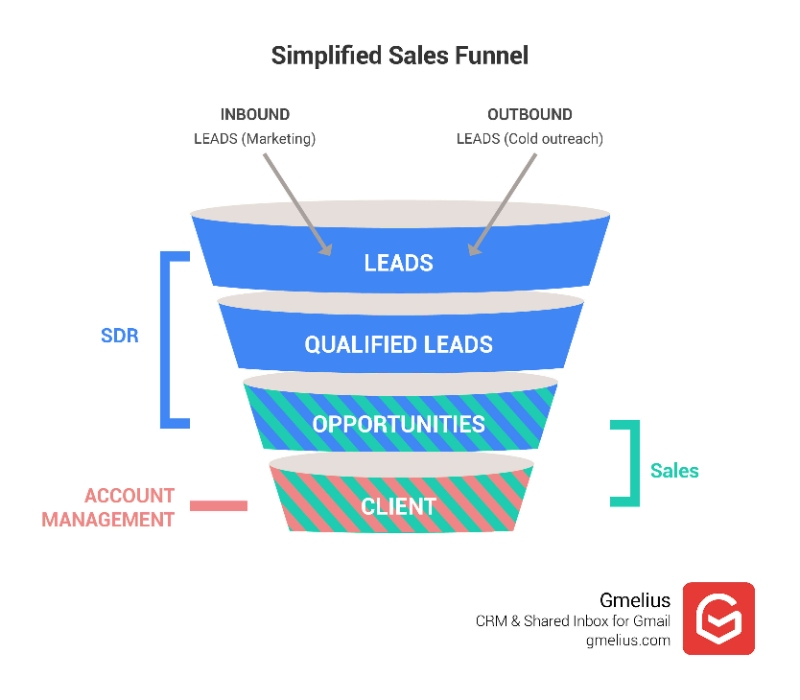
Duties:
The relationship between SDRs, AEs, and Clients is a triangular one, where SDRs are the wingmen for AEs. SDRs set up meetings and call for AEs to get into a good relationship with clients. SDRs, until then, would have just given an introduction about the product, its prime features, and why it could be a potential alternative to the client's current choice. Once the client is convinced, he needs a better-informed person to elaborate on the product features, services rendered, pricing plans, and other aspects that might need a bit of negotiation. These aspects are taken care of by an Account Executive, who takes the responsibility of drawing them closer to the tail of the pipeline.
Lead Qualification vs. Deal Closure:
The deciding factors that determine the quality of an AE and SDR are different. For an SDR, it is the effort taken to increase the number of leads qualified, while for an AE, it is based on the number of deals closed. Sales development representatives work on generating leads by using various tools, techniques, and management systems. They also brush up on soft skills that are required to maintain a cordial relationship with these clients. AEs use their skills to prevent these leads from slipping the pipeline and ensure they are converted into paying customers.
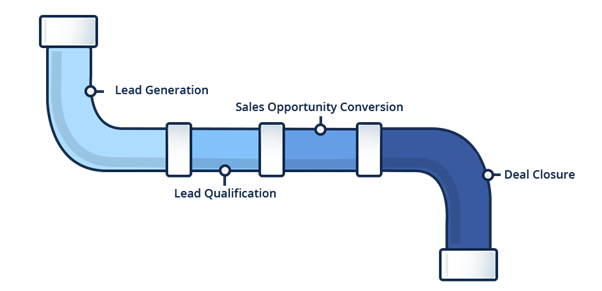
Skillsets:
Different roles require different skill sets. AEs and SDRs handle different phases of pushing customers to the end of the sales funnel. Though their entire job boils down to finding potential leads that can be converted into paying customers, SDRs focus just on finding and qualifying the leads, and AEs complete the cycle.
SDRs require strong research skills. Their communication skills have to be persuasive enough to draw in potential leads. They must also have the persistence and resilience to handle rejections and go past them. They must understand the nuances of building rapport with clients to make them stick around till the end.
AEs, on the other hand, must know to call a spade a spade, express the facts and description of their services, and engage in better negotiation. He must know when to go easy and when to say a cut-throat no to a deal. He must learn to strike an ideal balance between customer satisfaction and business growth. He must also develop skills in addressing clients, nurturing relationships, tailoring products and services as per expectations, and closing deals effectively.
Tools and Technologies:
While both SDRs and AEs use CRM software and other sales tools, their specific requirements may differ. SDRs typically utilize prospecting tools (e.g., LinkedIn Sales Navigator), email automation, and tracking tools (e.g., Outreach or Yesware).

Social media platforms to research and engage with potential clients. AEs, in comparison, often rely presentation software (e.g., PowerPoint, Prezi or MobiSlides)
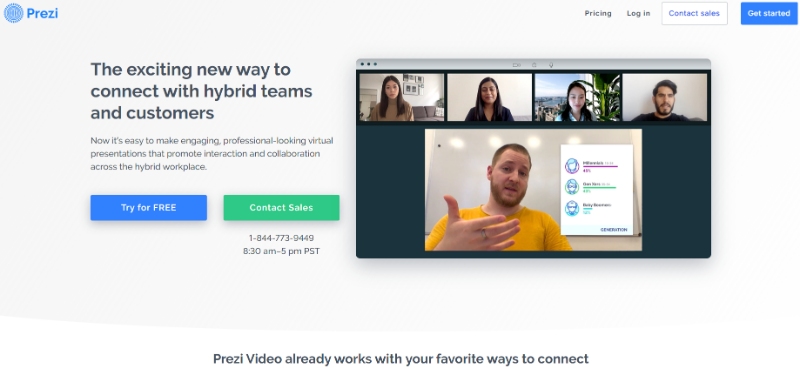
Video conferencing platforms (e.g., Zoom or Microsoft Teams) and contract management tools to facilitate their sales process and manage client relationships.
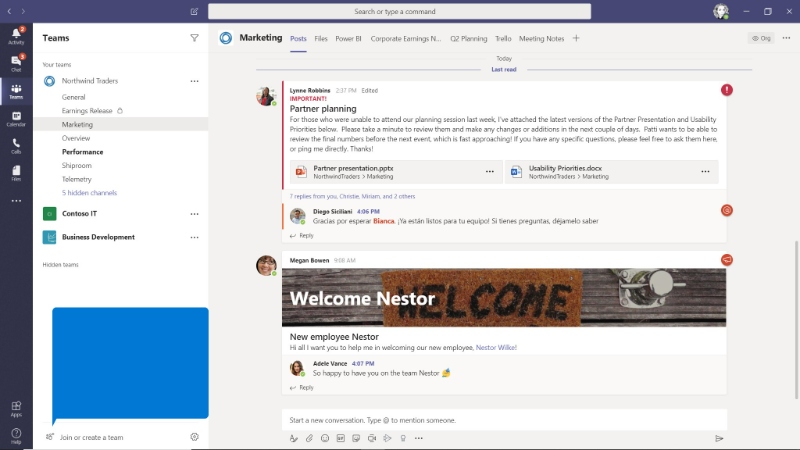
AE vs SDR – Know how the market works!
Synergies Between SDRs and AEs
We have discussed enough previously to understand how distinct the roles of AEs and SDRs are. However, for the success of the sales funnel, it is essential that they work closely and in perfect sync. The following are some of the reasons:
- Both roles are part of the same sales funnel, while one precedes the other, SDRs before AEs. But their ultimate goal is the same: winning prospects and closing deals.
- If an AE finds it challenging to close leads, it could also be an issue that stems from the fact that SDRs lack lead-qualifying skills. Therefore, AE must provide feedback on the quality of leads generated by SDRs and help them understand where things go wrong.
- A healthy sales pipeline results from the cordial relationship between an AE and SDR. Since AEs are seniors and more skillful, it is their duty to train and guide SDRs to carry out their tasks in line with the company's sales goals.
- Likewise, SDRs must understand the huge responsibility they are shouldering. If they fail to fetch profitable leads, they are completely ruining it for AEs, who will end up dealing with clients who simply waste their time and energy.
- AEs must share valuable insights about the nature of the prospects they are looking for to seal better deals. It will refine an SDR's search and conversion efforts. Similarly, since SDRs have more direct contact with the customers, they have to identify their pain points and share their experiences, market tolerances, and consumer preferences that AEs have to work on.
- A well-trained SDR makes the job of an AE simple. An SDR who knows and does his role perfectly gives his superiors the confidence that they can move ahead peacefully by converting targets and closing the deals.
Conclusion
SDRs and AEs are the pillars of a company's sales team and pipeline. A B2B company should focus on creating a well-integrated sales team that understands the importance of collaboration and communication between SDRs and AEs. A B2B company can effectively build a healthy sales pipeline and achieve sustainable revenue growth by understanding the key differences in 'SDR vs AE' and optimizing the synergy between these two roles.

